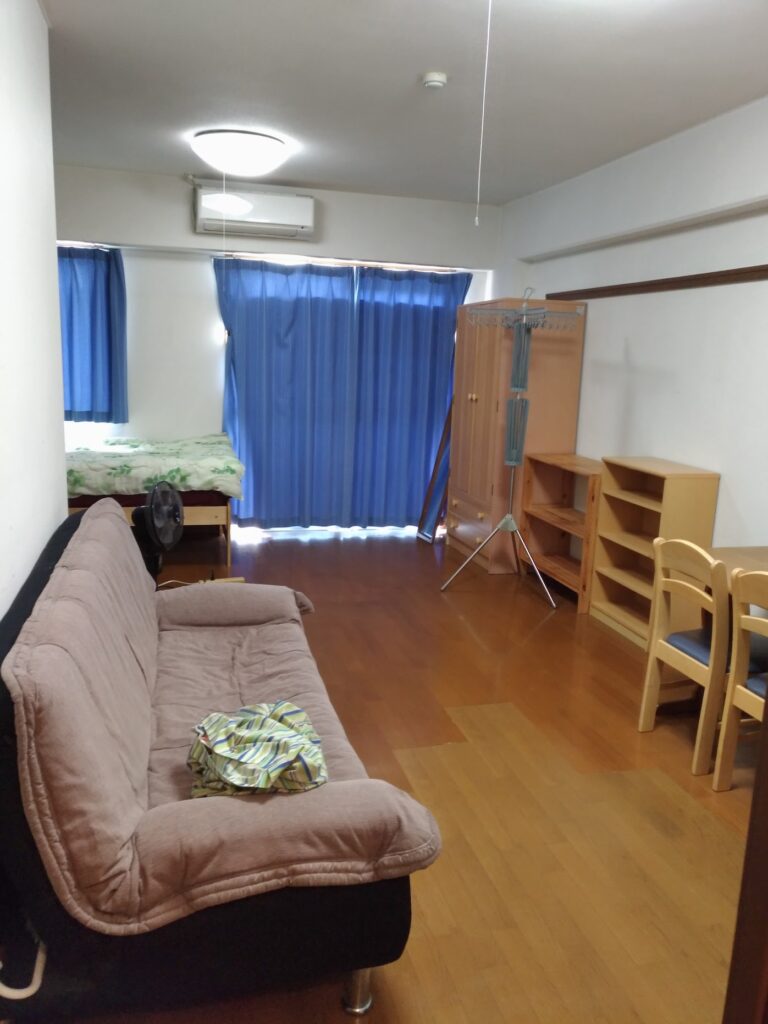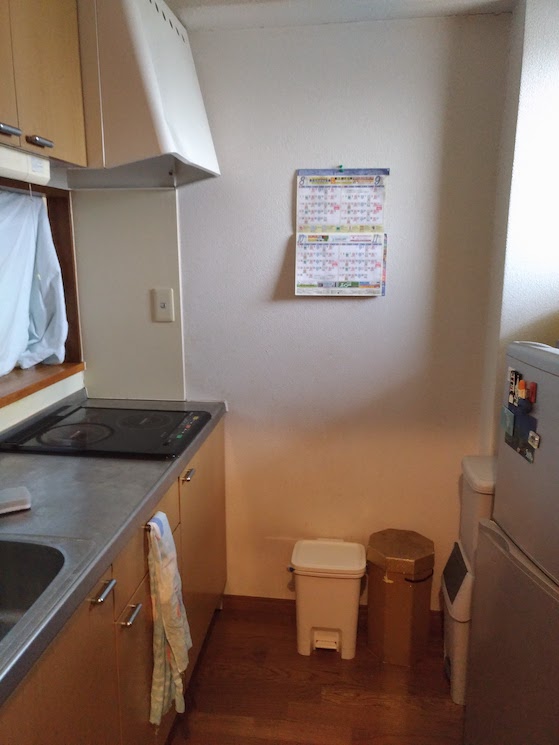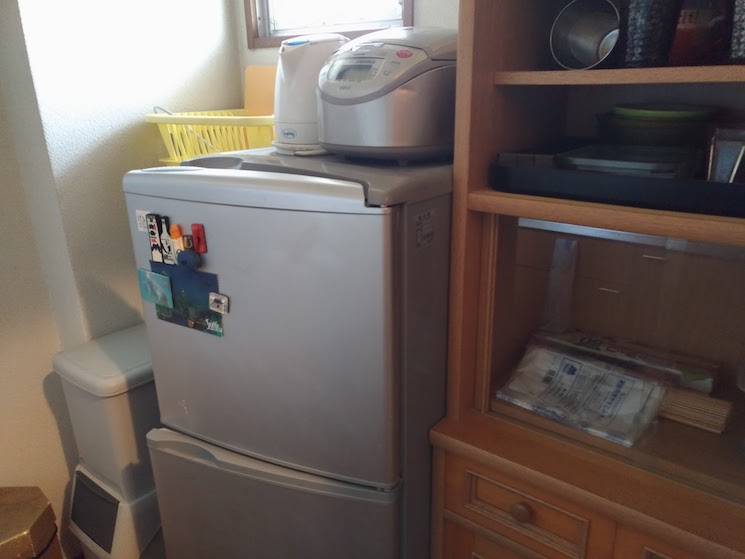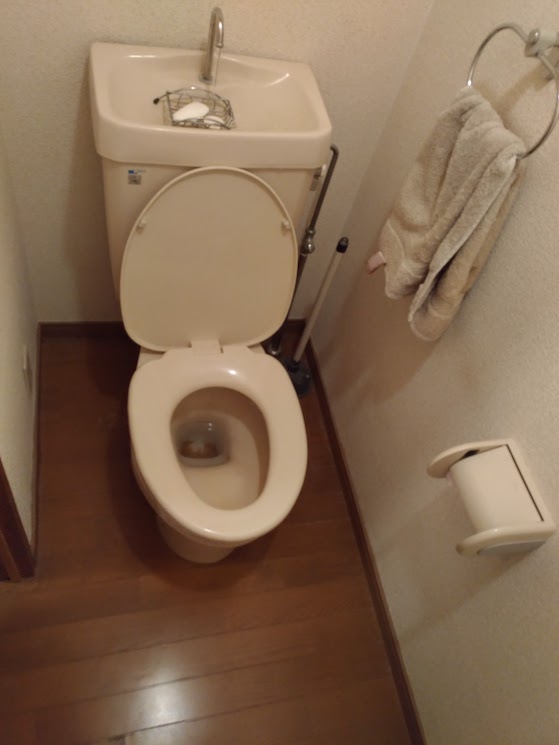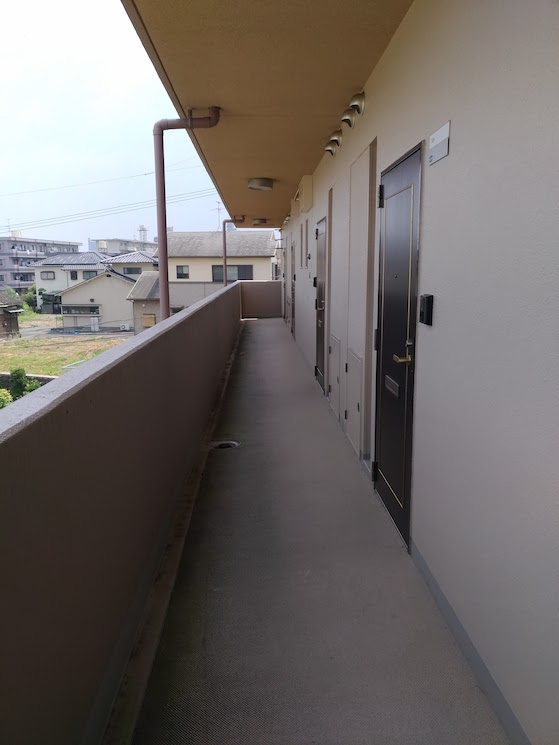First, there a 1,000 different questions you could ask your CO or predecessor, so I listed some and will try to answer most of them from my experience. Also, if you are still interested in what apartments look like, check out my Osaka and Oita apartments post.
My 1LDK Apartment in Kumamoto, 2013
Apartment Information:
My apartment was a 1 (room) Living room (L), Dining room (D), and Kitchen (K) in a 3 story building. Everyone room had a parking space in the lot on the backside of the building. My apartment was reenforced concrete with rebar (safest type of building in Japan) over wood. My building survived a level 6 & 7 earthquake with only damage to the pavement around the structure.

I saved a lot of photos of my apartment. These were from my cleaning before handing it off to my successor. It was my favorite apartment ever in Japan. It wasn’t too big or too small. It had enough space for me and was soundproof to some extent. It was also very strong against earthquakes, so I could feel safe there.
I loved having all electric appliances. They were much cheaper to have than gas. My water heater and stove saved me a lot of money for long periods of use. For example, I could take hour long showers if I wanted to without using much electric because I had a big efficient water heater, something that is a rarity in Japan. Also, my bathroom and toilet had no windows, so it wouldn’t get cold in the fall.
Side note, I used a towel to cut off the kitchen from the main room. However, I could roll it up easily when cooking, so I could watch shows and movies on my laptop. It also helped cut down on cooling and heating for my space. I really liked the small counter top and space in my kitchen as it made cooking easy, another rarity.
My Location
This shows my exact location. You can tell that it is not in any major metropolitan area like Tokyo or Osaka. I lived in Southern Kyushu down in Kumamoto Prefecture. My city has about 1 million people, which is a decent size. All cities in Japan offer something special :).
https://goo.gl/maps/REk3PVDtR8h3MpcM8
My Apartment Fees
Let’s just jump into the overall fees. Remember, housing is subsidized 30% for teachers.
- Rent: ¥38,000 (flat-rate, 2013-2017)
- Rates usually never change. You could live in the same building for 5 years straight and never see a rent increase.
- Electric: ¥5,000 – ¥7,000 (depending on the season)
- This varies depending on your usage. I always used my A/C at night with no high increase in price. My city also cut electric prices at night by half!
- Water: ¥1,500 (flat-rate)
- Most places have a flat-fee. Don’t expect high water bills.
- Internet:¥5,000 (flat-rate)
- NTT Flets has cheap internet rates. All based on the company you choose.
- Parking: ¥0 (built into my rental fee)
- This can range from ¥0 – 10,000 based on your location and apartment parking facilities offered.
- Gas:¥0 (all electrical appliances and hot water heater)
- About 90% of apartments in Japan use gas for cooking or heating water, but all-electric isn’t that rare.
- Size: 36m2 of my room.
My apartment was pretty cheap for a big city (Kumamoto), but it can be more expensive than other rural places or much cheaper compared with large cities. My place wasn’t extravagant, but I loved it, especially my parking space. My apartment was also soundproof very well. Moreover, I had easy access to a tram line that went to downtown. Lastly, it even survived level 6 & 7 earthquakes!
What Should I Bring?
This is all dependent on what your predecessor tells you, or in the rare case, you don’t have one. It’s important to bring some essentials. There are many items that you could go out of your way to bring like pillows, blankets, pots, pans, desk, tables kitchenware, fridge, toaster over, etc. However, all of these items are easy to purchase in Japan.
Many furnished apartments come with some of these already like a table, fridge, microwave, bed, and air-conditioner. Many of these big objects are hard to plan for while overseas with the exception of bedding supplies like pillows and blankets that you might want to bring.
I recommend bringing or shipping the most essential items that you can’t live without!
Internet Setup and Fees
Internet is vital to your stay in Japan. Getting the internet has become less complicated in recent years. Many big companies such as NTT and Softbank are now providing services in English and other languages to attract consumers.
Your CO will recommend a provider or you can research your own. Usually, it takes a week to a month to get internet at your apartment. However, everywhere is different depending on internet providers. Japanese internet, for the most part, is extremely fast and reliable! It’s also cheap as mentioned above (¥5,000 – 7,000). This is FLET’s HIKARI Internet. This will give you a good idea of what to expect and how to choose a plan.
My Apartment After a Major Earthquake…
Here is my place after level 6 and 7 earthquakes. I’m providing this to show the destruction. It wasn’t all bad. It only took a few hours to clean up. However, I had to throw away a lot of broken stuff, but none of it was valuable.

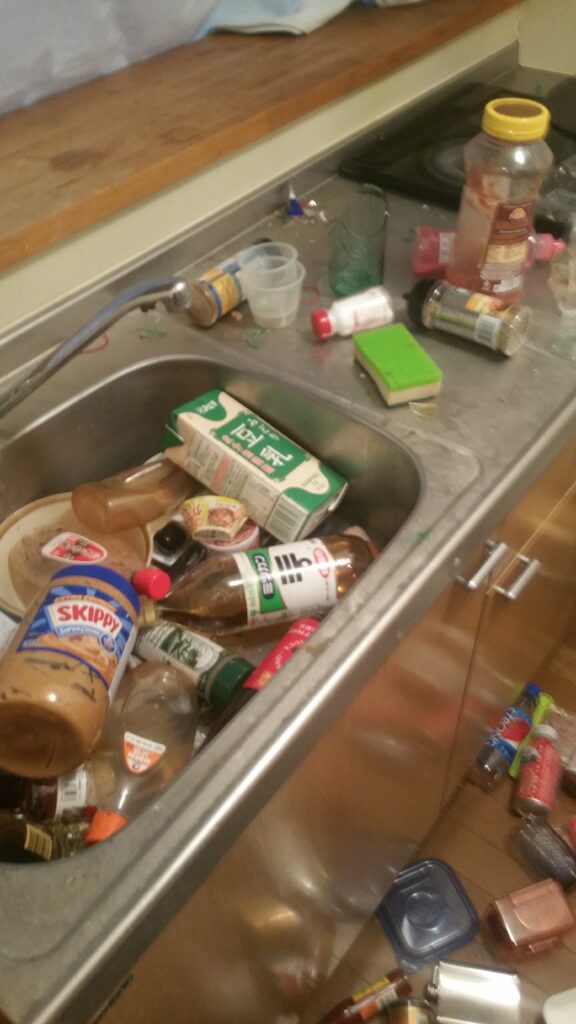
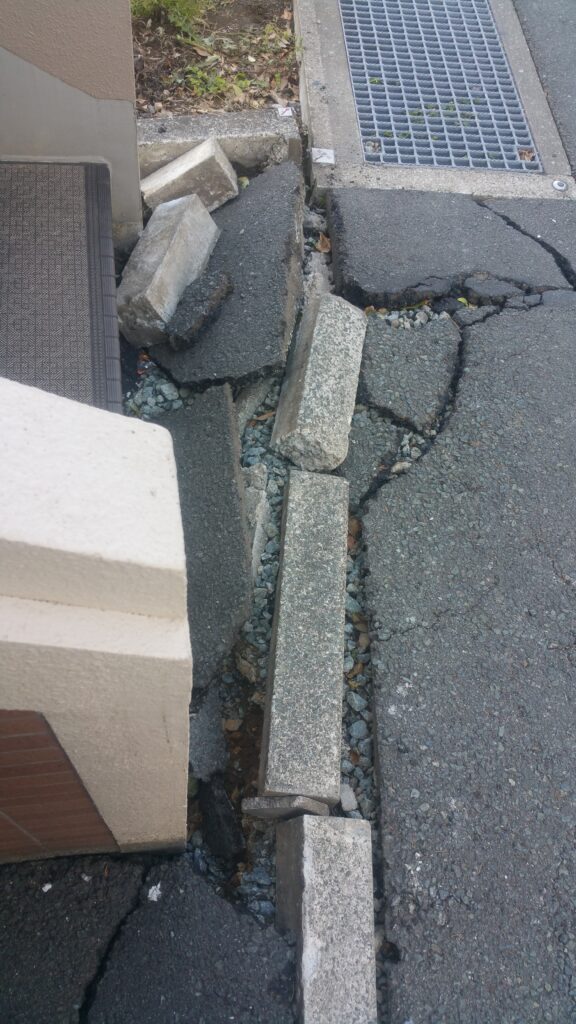

Earthquakes are no laughing matter. It’s very rare that you will encounter a level 6 or 7, but do not rule out the chances. I never had an earthquake in my area, well maybe a few small ones till the big one! Earthquakes are something you should always consider for your apartment. For example, do not place your best valuables in high places. Make sure you anchor down furniture properly, and so on. There is no 100% way to avoid earthquakes, but you can always be prepared for them by following prefectural guidelines.
